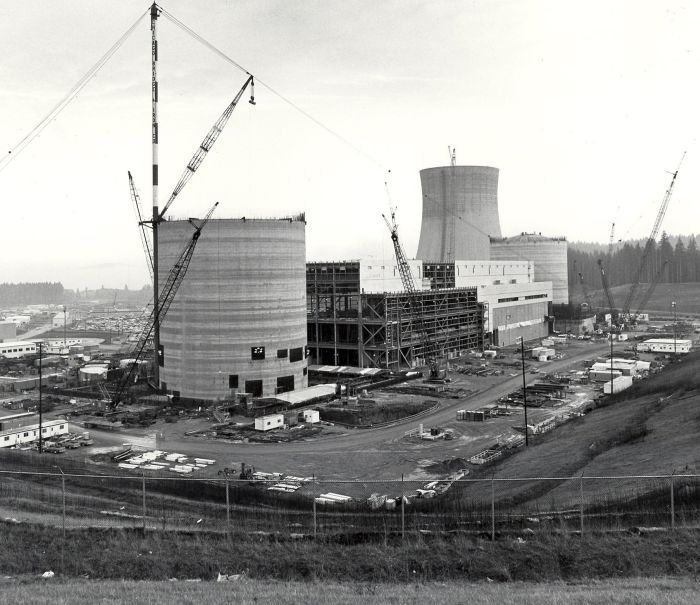ACTIVISM
Cracks in the Foundation for WPPSS
By Tom Clingman

The proposed nuclear plants at Satsop were a target of much activism in the 1970s and early ’80s. Underpinning the WPPSS drive to build the plants was a whacky approach to projecting future power demands for the couple dozen public utilities in our state. They simply asked each utility how much power they might need. Which sounds like the obvious approach, until you look under the hood like local economist/activist Jim Lazar did. Every Public Utility District (PUD) had industrial areas where they hoped to attract new industry. So each PUD included ample power to fully develop their new industrial employment dreams. The problem was that this added up to WAY more new industrial development than could feasibly occur in the region—everybody was not going to get the new factory. And thus the WPPSS projections included far more electricity than was actually needed. Plus there was no accounting for “price elasticity”—the fact that less of a thing is used as the price goes up.
The WPPSS plan to build nukes was also very expensive. Even leaving out the immense cost of decommissioning and caring for the nuclear waste, and the inevitable cost overruns, the projected cost for the member PUDs was huge. This affected the big utilities like Seattle City Light and the small rural electric co-ops. In summary: WPPSS nuclear plant scheme—which included the Satsop plants—was way oversized and immensely unaffordable.
Jim came up with a brilliant way to get the word out to the PUDs on the huge costs, especially to the small PUDs and co-ops. WPPSS was selling municipal bonds to pay for their scheme. A WPPSS bond prospectus was prepared for each member PUD and electrical co-op. Buried in each prospectus was the projected debt burden for each customer of the utility that would be created by the bond sale.
So Jim dug out the per-customer debt projections for each PUD and electrical co-op. We got a list of all the newspapers in the state. We created a “letter to the editor” form letter, inserted the PUD/co-op name and the per-customer debt figure, and sent it off to the newspaper nearest to each utility.
An early crack in the WPPSS nuclear power edifice came at a WPPSS meeting. Someone from a rural electrical co-op stood up, waving around a letter to the editor that showed the massive debt load for each of their members, and expressed grave concerns about the WPPSS nuclear power plan.
Jim Lazar often explained the details of this scheme, but the full implications were not clear to me. The $2.25 billion WPPSS municipal bond default ended up being the largest in history. The default impacted large firms holding multiple assets. It also damaged thousands of people across the state for which the “safe” WPPSS municipal bonds were a major investment. People lost their retirement savings. Their senior years were made insecure and more marginal. Satsop and the entire WPPSS scheme seemed like a very bad idea to me at the time.
I sometimes wonder what I would have done at Satsop if I had fully understood the implications of the WPPSS implosion. I wonder what I would have done if I could have traveled to the future and seen the whole horrible picture. Chaining myself to the gates and shouting hysterically comes to mind.
We encourage readers to contact us with comments and corrections. Disclaimer
